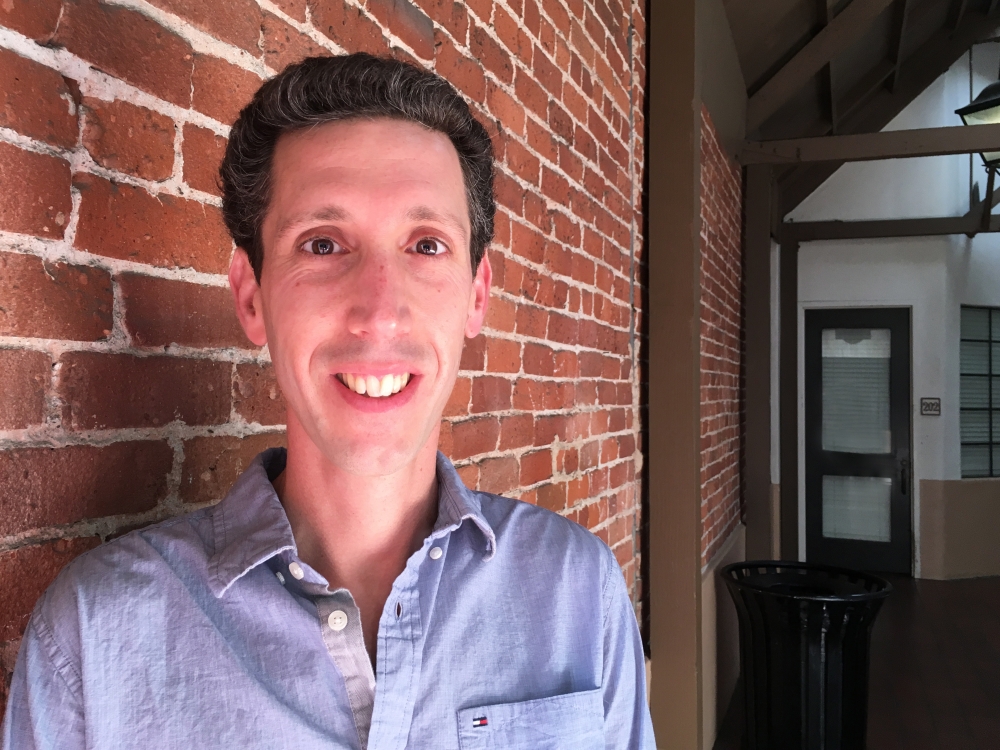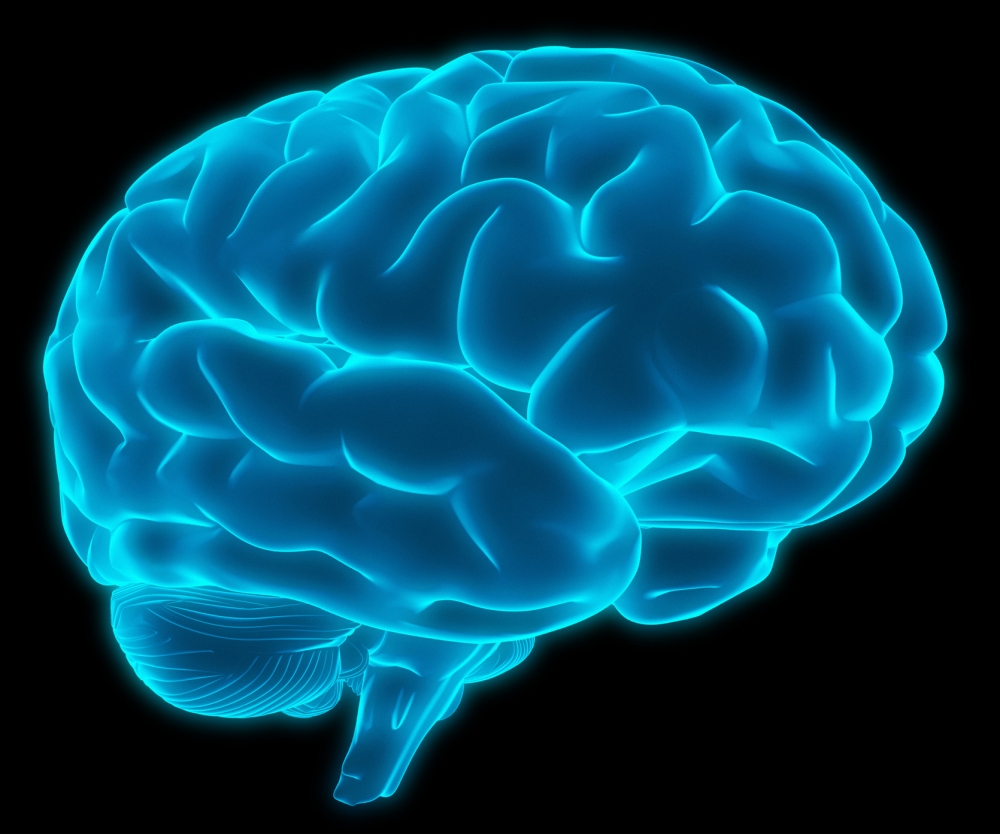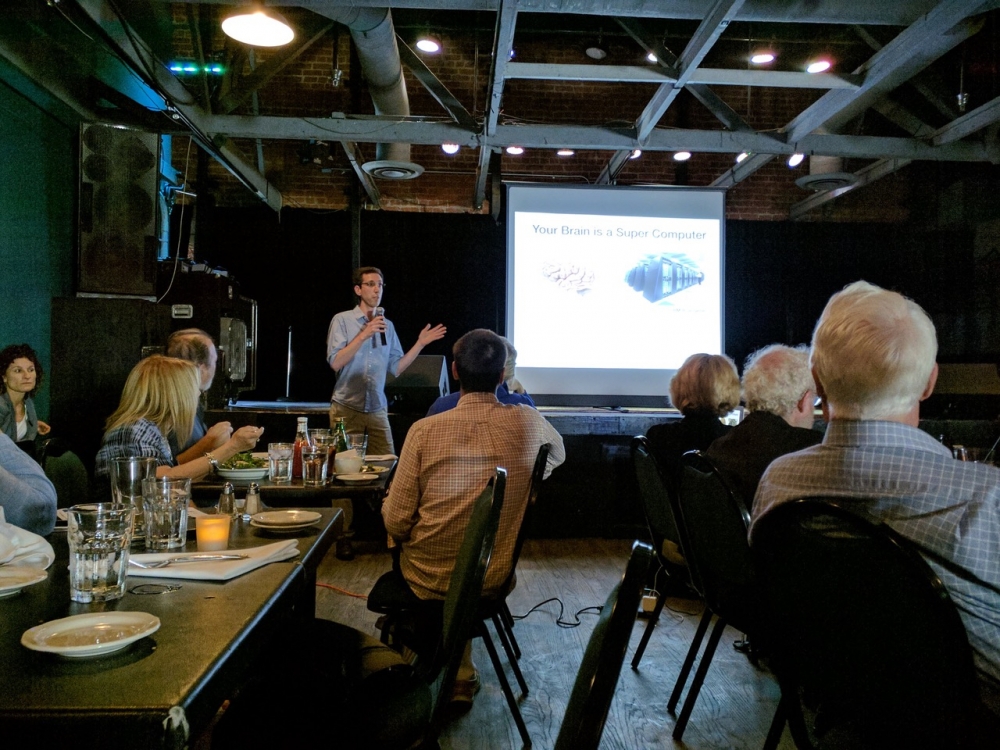A New Wrinkle in Physics

We spend a lot of time worrying about and attending to the wrinkles and creases that appear on our skin as we age, but there’s one body part where wrinkles are a good thing: our brains.
“Having wrinkles on the brain is advantageous for you,” said Eyal Karzbrun, a postdoctoral scholar at UC Santa Barbara’s Kavli Institute for Theoretical Physics (KITP) in a talk for Café KITP, an occasional after-hours event held at SOhO Restaurant & Music Club in downtown Santa Barbara.
People “filled the house for physics” as Karzbrun gave a presentation titled “How the Brain got its Wrinkles,” a subject that pushes the boundaries of physics into neurobiology. Moderated by Boris Shraiman, Gurley Professor of Theoretical Physics and Biology at UCSB, a vigorous question-and-answer period allowed for the audience to learn even more after the talk.
Comparing the brain to a traditional computer, Karzbrun, who specializes in biophysics and synthetic biology, drew attention to their architecture — specifically the spatial requirements for computation. While computers use electronic transistors and human brains use neurons, both rely on surface area in particular to lay out the components needed for processing information.
“In many cases, a desktop computer is mostly empty space,” Karzbrun said, showing a picture of an open computer case. Most of the actual computing functions, he explained, occur only on the surface of an electronic board, where the central processing unit and memory are laid out. The rest of the open area is for other components, or for more electronic boards for additional computation.
Turns out, the brain determined how to optimize those spatial requirements a long time ago. As humans evolved, brains developed more folds and wrinkles in an effort to create more surface area for more neurons to carry information.
In addition to more surface area, however, proximity between neurons is desirable for fast computation, so rather than having smooth broad surfaces or a large volume brain, wrinkles make it possible to have a large surface area.
“In order to be computationally strong and quick, what your brain does is take a lot of surface area and put it in a small volume,” Karzbrun added. And the only way to do it, physically, is to have wrinkles.
Other factors, including the relatively small sizes of the neurons in the brain, also optimize the organ for performance.
Assume a Spherical Brain
To understand how the brain wrinkles, however, Karzbrun turned to analogues, such as gels, which have that soft, brain-like consistency. If you take a flat gel and engineer it somehow to grow more rapidly from its edges when you put it in water, the result will be a structure with wavy edges, he said.
“We learn that if you have a brain that wrinkles during growth, it must mean that it grows more on the outside,” he said.
Taking the concept to a more sophisticated, more biological stage, Karzbrun then turned to a three-dimensional ball of cells, cultured in a lab.
“The way biology works is through a big system that is made of a lot of small, active components,” he explained. Through the collective actions of each component, the entire system can take different shapes. From a random assortment of cells, the ball first self-organized, rearranging into a pattern.
In fact, he continued, the ball of cells not only organized, but the surface began to wrinkle due to the individual actions of each cell located at the surface of the ball. Through the phenomenon of differential growth, Karzbrun noted, the rates of growth of the outer cells became faster than the ones closer to the core of the ball. And because of that, he added, the only shape they can take is in the form of wrinkles.
Watching the biological system do its work was an eye-opener for Karzbrun, and probably for many physicists who explore disciplines on the boundaries of their own.
“It’s surprising because we as physicists are used to looking at systems that go from an organized, ordered state, into a disordered state,” Karzbrun said. “But active, biological material can go in the other direction, from a disordered system to an organized system.
“If we want to understand living systems,” he added, “we have to come up with new physics.”





